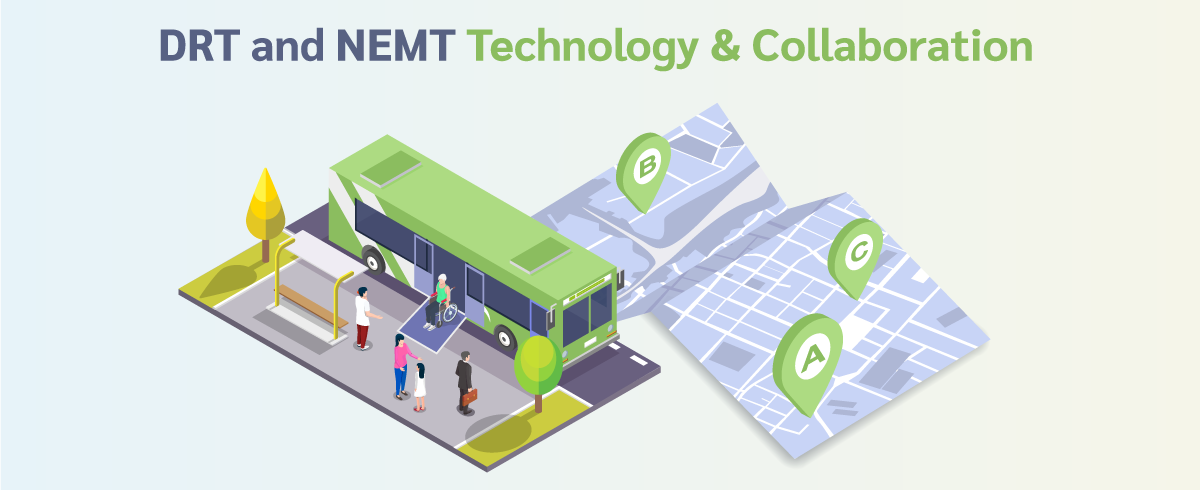February 1, 2024
In the wake of the COVID-19 pandemic, paratransit services, including Paratransit Access-A-Ride and DRT Transit, have undergone significant transformations, emerging more robust and resilient in the face of unprecedented challenges. Three years post-outbreak, paratransit providers have embraced innovative solutions, prioritizing passenger safety, retaining skilled drivers, and fostering regional collaboration to ensure secure and equitable travel for individuals with disabilities.
Technological Advancements for Efficient and Safe Paratransit Services
Central to the post-pandemic evolution of paratransit is the integration of DDS Wireless ADEPT IQ technology. This cutting-edge dispatch system has proven indispensable for services like Paratransit Access-A-Ride and DRT Transit, facilitating efficient door-to-door management while implementing crucial safety measures, including the “no shared ride” policy. Harnessing technology has not only allowed paratransit services to adapt to pandemic challenges but has also set new standards for secure and efficient transportation.
Prioritizing Passenger Safety in Paratransit, NEMT, and More
Ensuring the safety of passengers, especially those with disabilities, has become a paramount concern for paratransit providers, Non-Emergency Medical Transportation (NEMT) services, and others. Measures such as the “no shared ride” policy and optimized scheduling have not only mitigated COVID-19 exposure but have also created a more secure travel environment for users of services like Paratransit Access-A-Ride and DRT Transit. This commitment to safety has not only retained the trust of existing riders but has also paved the way for an inclusive and welcoming atmosphere for individuals facing diverse mobility challenges.

Retaining Skilled Drivers Through Innovative Practices
Recognizing the invaluable role of skilled drivers, paratransit providers, including those offering Non-Emergency Medical Transportation, have proactively implemented safety measures and optimized scheduling to protect driver health. This strategic approach has not only prevented layoffs but has also ensured a skilled and experienced workforce for regular operations, benefitting services like Paratransit Access-A-Ride and DRT Transit. By fostering a supportive environment for drivers, paratransit services have strengthened their foundation, guaranteeing a high level of service continuity.
Regional Collaboration for Paratransit Resilience and NEMT Software
Success stories of safety implementations, supported by DDS Wireless and NEMT software, have emerged in regions such as Broward, Boston, New York, Washington, and California. This underscores the importance of regional collaboration for Paratransit Access-A-Ride, DRT Transit, NEMT services, and other providers. Sharing best practices and implementing scalable solutions, these regions have established resilient paratransit systems capable of weathering unforeseen challenges. This collaborative approach, coupled with the integration of NEMT software, serves as a model for other communities, showcasing the effectiveness of working together to create adaptable and robust transportation networks.
Impact on Vulnerable Communities and Non-Emergency Medical Transportation
Post-COVID-19 paratransit service data analysis reveals profound effects on individuals with disabilities and those in need of Non-Emergency Medical Transportation. Recognizing the importance of tailoring services to diverse needs is crucial for public transit agencies, paratransit operators, and NEMT service providers to ensure equitable access to transportation services. The lessons learned from the pandemic underscore the need for flexibility and responsiveness in service provision, contributing to a more inclusive and accessible transportation infrastructure for services like Paratransit Access-A-Ride, DRT Transit, and Non-Emergency Medical Transportation.
Conclusion: Thriving in the Post-Pandemic Era
The adaptations made in response to the COVID-19 pandemic, including the integration of NEMT software, have not only safeguarded paratransit services like Paratransit Access-A-Ride and DRT Transit but have also provided a roadmap for creating inclusive and resilient transportation systems. The combination of technology, prioritization of passenger safety, retention of skilled drivers, regional collaboration, and the utilization of NEMT software collectively contributes to a paratransit landscape that is not just recovering but thriving in its commitment to providing accessible and secure transportation for all.
Get your free demo now and see how our SaaS platforms will optimize your transportation organization.
Subscribe to our newsletter
2023. All rights reserved. DDS Wireless Inc.